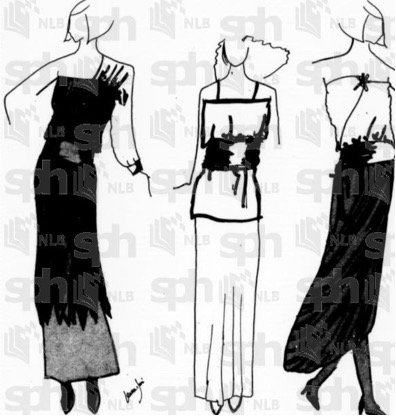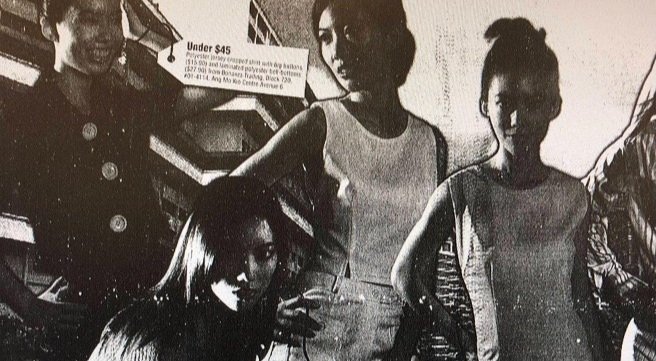1980s
Key themes
-
The 1980s began with a strong focus nationally on consumption, but also a collective sense of ‘self’ which contradicted the over-riding governing principles in Singapore of consuming within “decent, modest and productive” constructs. This era saw the development of Singapore into a mall City-State, shopping guides, departmental stores, food reviews, and high fashion retails. The arrival of regional economic giants such as Japan’s Sogo in 1986 heralded the arrival of many other higher end flagship departmental stores such as Takashimaya and Heeren. Rather than depending on its regional tourism consumption, there was a recognition in the rise of the middle class in Singapore, with an awareness of disposable income of the youth and middle class. The economic slump was countered with the strategic partnerships and collaborations with ASEAN countries but also a recognition of the strength of domestic consumer spending.
-
With the rise of the collective self and rising educated middle class (Ooi, 1980), more concerns were directed towards collective identity, and that of national identity. Perennial questions arose about the need for a national costume (Khalik, 1980, ‘Do Singaporeans need a national costume?’). This era saw the enforcement of a widespread concern about our national identity as public broadcasts and television studies demonstrate how even programming enforced this public belonging and national narrative building in local programmes such as The Awakening (Tay, 2016).
-
Coincidentally, the ‘hero’ in the Singapore story has always been the economic and trade. Fashion garment manufacturing and high end fashion production was posited as a possible competitor for the global, or at least regional Asian market. However Singapore faced challenges in pursuing fashion manufacturing. There was an evident desire by the Economic Development Board (EDB) to globalise and export local enterprises in fashion sector, suggesting a government push for resources, without evaluating the groundswell. This desire was well echoed by fashion designers and retailers who desperately saw the popularity of local fashion identity without the usual rise of local designers to back the national, or local scene.
-
With a turn towards the national front, domestically gendered differences were beginning to change. Fashion segments of our national broadsheets reported on women’s stories highlighted the changing desires of women (Koh, 1982), who wanted to work rather than start a family. Contrastingly, older single women parents also saw work as salvation for their children and homes. Highly sensationalised, these features take on distinctive social agendas.
More stories
-

The Ascent of Japanese Fashion in Singapore
by Celestine Chia
Japanese designers caught the attention of Singaporean consumers and beyond through bold visual statements in their designs that seemed to challenge the conservativeness and conformity often associated with Asianness. This led to the rise of Japanese fashion in 1980s Singapore and the overall development of the relations between Japan and Singapore, facilitated largely through cultural exchange.
-

Australian Fashion in Singapore from the 1960s to the 1980s
by Leonard Wong
Australia was a major trading partner of fashion and textiles in Singapore from the 1960s to the 1980s. The constant innovation of fabrics and designs for an Australian climate contributed to cultural and economic exchanges between Australia and Singapore.
-

A Sartorial Mapping of Singapore's Fashion Districts
by Ruth Francesca Ho
Singapore’s fashion districts, which expanded from the 1950s to the 1990s, are geographical and architectural imprints of Singapore’s changing fashionable aspirations. These dynamic districts reveal how Singapore negotiated an increasingly globalised fashion landscape, reflecting and facilitating greater fashion consciousness and consumption amongst Singaporeans.
-

Singapore's Parisian Dream
by Angelene Wong
This article explores the relationship between Paris and Singapore, how Singaporean journalists have interpreted Paris for a Singaporean audience to sustain Paris’s influence as a fashion capital, how Parisianness has been adapted for Singaporean consumers, and how Paris was used as a benchmark for international success for Singaporean fashion practitioners.
-

'Tropical Fiesta', Singapore's Landmark Fashion Show of 1989
by Angelene Wong
Tropical Fiesta was one of the most extravagant fashion shows Singapore has seen and a key instance of cultural tourism, held during the 1989 Singapore International Shopping Festival. The show, organised between the fashion industry and governmental institutions, was a fashion spectacle for the Italy-based brand Byblos to raise funds for the new Singapore Dance Theatre.